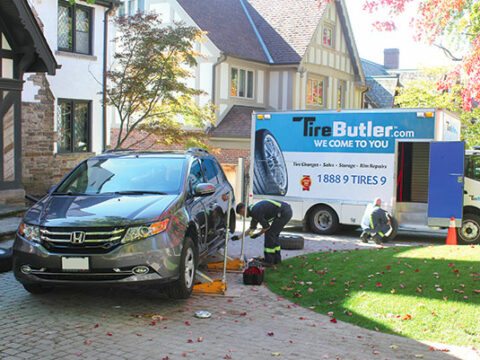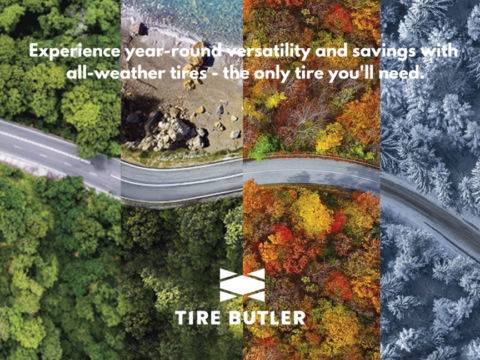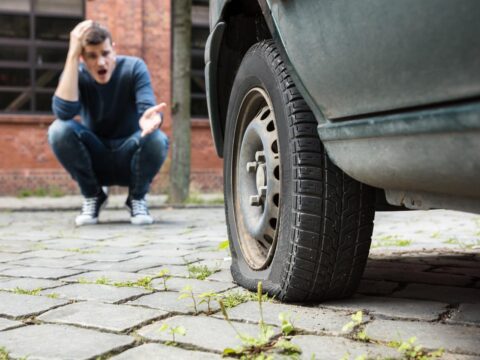When most people think of tire changes, they think of replacing a flat tire. However, there is another type of tire change that you may not be familiar with – the tire swap. A tire swap is a process of changing the tires and rims of a car, but instead of doing it all at once, you do it in stages. There are several reasons why someone might want to do this, including:
- Getting lower rolling resistance tires for better gas mileage
- Improving handling or performance capabilities of a car for track use
- Fitting new tires that have a larger diameter than the old ones, to prevent rubbing on the fenders
- Getting taller tires for off-road use.
Featured article : Can I Drive With A Flat Tire?
Tips in Performing Tire Swap
 Typically, an experienced mechanic like our team at Tire Butler performs the tire swap. If replacing only one tire, it is essential to have the vehicle re-aligned afterward. Before a tire swap works for any of these purposes, several other components must be considered as well:
Typically, an experienced mechanic like our team at Tire Butler performs the tire swap. If replacing only one tire, it is essential to have the vehicle re-aligned afterward. Before a tire swap works for any of these purposes, several other components must be considered as well:
- Wheel width: The tires must be wide enough to fit over the wheels, but not so wide that they’ll rub against the vehicle’s body or other parts while turning.
- Wheel offset (ET):Some newer models require a specific ET to ensure the wheels are in the correct position. If replacing an existing tire on a vehicle with wheels with a different ET, re-balancing may be required for safety.
- Suspension components:Some suspension components will also need to be replaced if changing the size of the tire. This is especially true when going from larger tires to smaller ones.
When performing a tire swap, it is not necessary to change the wheels or wheel offset of the vehicle for all types of tire swaps. However, if one is purchasing new tires with different dimensions, this may require either having the car realigned by a professional after installation, or at least making sure that the existing wheel offsets are correct for the new tire size.
Read More : Going Places : Tire Butler, Mobile Tire Repair and Replacement Service
Benefits of Tire Swap
 People perform a tire swap to gain one of several benefits, depending on what type of tires are put on the car during the procedure. For example, if replacing regular street tires with low resistance tires, there is typically an improvement in gas mileage of up to five percent. This is because low resistance tires reduce the amount of energy wasted as heat. For this reason, low resistance tires are commonly known as “energy-saving” or “green” tires.
People perform a tire swap to gain one of several benefits, depending on what type of tires are put on the car during the procedure. For example, if replacing regular street tires with low resistance tires, there is typically an improvement in gas mileage of up to five percent. This is because low resistance tires reduce the amount of energy wasted as heat. For this reason, low resistance tires are commonly known as “energy-saving” or “green” tires.
Some people replace the wheels on their car with wider ones to prevent rubbing on things like fenders when turning at elevated speeds. These wheels also typically have lower ET values to ensure enough clearance.
On the other hand, replacing regular street tires with higher performance or off-road wheels and tires results in improved handling. This is because these types of replacement tires are wider than most vehicles come equipped with from the factory for enhanced stability in turns.
Finally, performing a tire swap to get taller tires for use off-road or to prevent rubbing on fenders when turning sharply at high speeds is an effective way to avoid having to purchase new suspension components. However, it should be noted that replacing taller tires with smaller ones will require rebalancing after installation due to the difference in weight.
Read More : Dealerships can Learn a Lot about Customer Service Says MarketWatch.com
Can I Swap Tires Myself?
Tire swaps are easy enough for some people to perform but challenging enough that it’s not recommended for people who aren’t very experienced in working on cars already. It all comes down to personal comfort levels. If you are confident in your car knowledge and skills, absolutely go for it! If you are not too confident in your abilities with auto repairs, then it might be best to leave the tire swap up to a professional.
There are various reasons why you should or may want to have a professional do your tire swaps for you.
Tire Change Analogy– This is very similar to the analogy of not being able to put the toothpaste back in the tube. It’s impossible to get all the air out of another tire without removing it from the wheel, so when you put the new tire on the axle, it starts to inflate immediately. This creates a lot of pressure, and the tire just pops off either instantly or soon after driving away from the shop. Even if you successfully get it on without letting any air in, the tire will never sit perfectly flat on all four corners, which can cause excessive wear or vibrations.
Tire Fitment– Two tires may look the same, but they aren’t. Every tire has a unique diameter, width, aspect ratio, and load capacity. To ensure you get a perfect fit, it’s best to let a professional do this for you.
Tire Pressure– Even if you could swap the tire yourself without letting any air in, it’s still not safe. Tire pressure is crucial to proper tire performance and safety. Under-inflated tires wear out faster and heat up more quickly than those that are correctly inflated, reducing their grip on the road and increasing stopping distance.
Safety– It only takes a split second for you or your family to be involved in an accident. Even if you think that it’s unlikely for this to happen, you should never take the risk. Hiring a professional helps ensure your safety by including things like adequately inflating your tires and checking your brakes.
If you’re looking for a company to provide tire swap services, look no further than Tire Butler. Whether you need new tires or just want your old ones swapped out with fresh rubber, we have what it takes to get the job done quickly and professionally. Our team of experts is standing by, ready to help give your car that brand-new feeling without any hassle at all. Schedule an appointment today!



